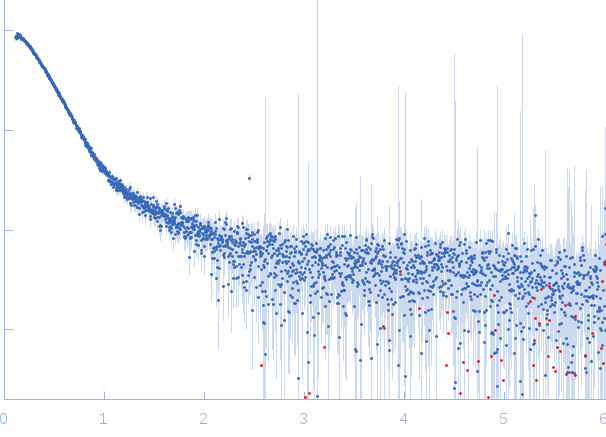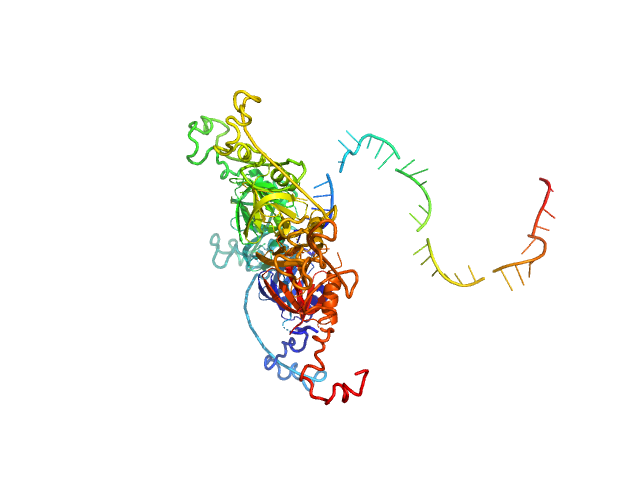|
Synchrotron SAXS
data from solutions of
Complex of Hfq with DsrA
in
50 mM Tris-HCL 150 mM NaCl 1.0 mM DTT, pH 7.5
were collected
on the
EMBL X33 beam line
at the DORIS III, DESY storage ring
(Hamburg, Germany)
using a Pilatus 1M-W detector
at a sample-detector distance of 2.7 m and
at a wavelength of λ = 0.15 nm
(I(s) vs s, where s = 4πsinθ/λ, and 2θ is the scattering angle).
Solute concentrations ranging between 2.3 and 9.4 mg/ml were measured
at 35°C.
Eight successive
15 second frames were collected.
The data were normalized to the intensity of the transmitted beam and radially averaged; the scattering of the solvent-blank was subtracted.
|
|
RNA chaperone Hfq
(Hfq)
|
| Mol. type |
|
Protein |
| Organism |
|
Escherichia coli |
| Olig. state |
|
Hexamer |
| Mon. MW |
|
11.2 kDa |
| Sequence |
|
FASTA |
| |
|
RNA DsrA
(Hfq_DsrA)
|
| Mol. type |
|
RNA |
| Olig. state |
|
Monomer |
| Mon. MW |
|
12 kDa |
| Sequence |
|
FASTA |
| |
|
 s, nm-1
s, nm-1
